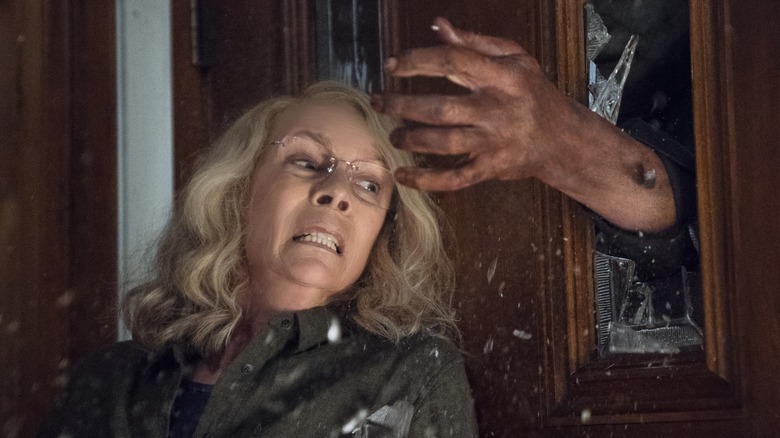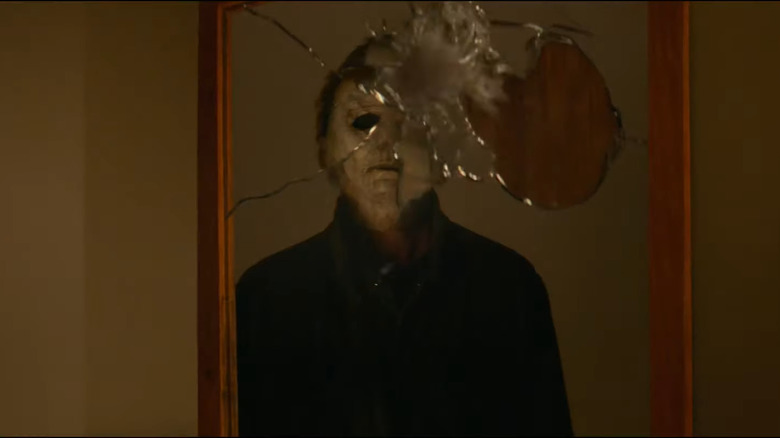One Of Halloween 2018's Coolest Shots Was Much Harder To Pull Off Than You'd Think
We may receive a commission on purchases made from links.
The 2000s were full of remakes of beloved horror franchises. "Nightmare on Elm Street," "Friday the 13th," "Halloween," "The Texas Chain Saw Massacre," and many more were reinvented for a new generation. There were enough of these that the idea of rebooting horror franchises became the main satire target of "Scream 4" — the best of that franchise's sequels. But despite how many of these there were, most failed to leave a lasting impact.
This is why it was so surprising that "Halloween" would find such big success with its second reboot — technically, it's third, if you count "Halloween H20: 20 Years Later." David Gordon Green reinvented the classic horror movie in a legacy sequel that served as a love letter to fans. As /Film critic Chris Evangelista described it back in 2018, the film is "a brutal, scary and sometimes funny sequel that gives the long-running franchise the respect and adoration it deserves."
Even if Green's two sequels weren't as good, they left a mark as commercially successful movies that offered something new to the franchise. Still, no matter how successful these movies were, or how much more elaborate and expensive they were compared to John Carpenter's original classic, there were still struggles. As Abbie Bernstein reveals in her book "Halloween: The Official Making of Halloween, Halloween Kills and Halloween Ends," one of the best shots of the movie almost didn't happen. It's the scene where Laurie shoots Michael, but it turns out she only shot a reflection of The Shape in a mirror.
The Shape returns
"Laurie she thinks she has a clear shot, and it turns out that it was actually a reflection in a vanity mirror," cinematographer Michael Simmonds explained in Bernstein's book. "It's a cool scare. But it didn't work practically on the day."
Just like Laurie misses the shot in the film, the actual shot misfired during production of the film. Turns out, the special effects team loaded paintball guns they would use to shoot the mirror, and while the projectiles did go through the window Laurie was meant to shoot, they didn't break the mirror. And since the crew was running out of time, there was no time to reset and try the effect again on location.
So the shot had to be captured later on a sound stage. The mirror had to break — if it didn't, how would the audience understand that Michael didn't actually absorb the bullet by magic? Art director Sean White explained what they needed to do in order to achieve the effect after it didn't work initially:
"We had to recreate what you would see of the room in the mirror [with Michael on it] on stage, and then redo that shot where we could get the glass to break, and then superimpose that onto the mirror at the location where we originally tried to shoot it."
It's a bit of movie magic to solve a relatively simple yet crucial problem, but circuitous methods to a final destination are often what contribute to the most memorable movie moments — or even whole movies, for that matter. Take "Halloween II," the film that cemented this as a proper horror franchise and confirmed Michael Myers as an undying icon. That movie would probably never have happened if it wasn't for a lawsuit. And even Michael Myers himself might be scared of litigation!

